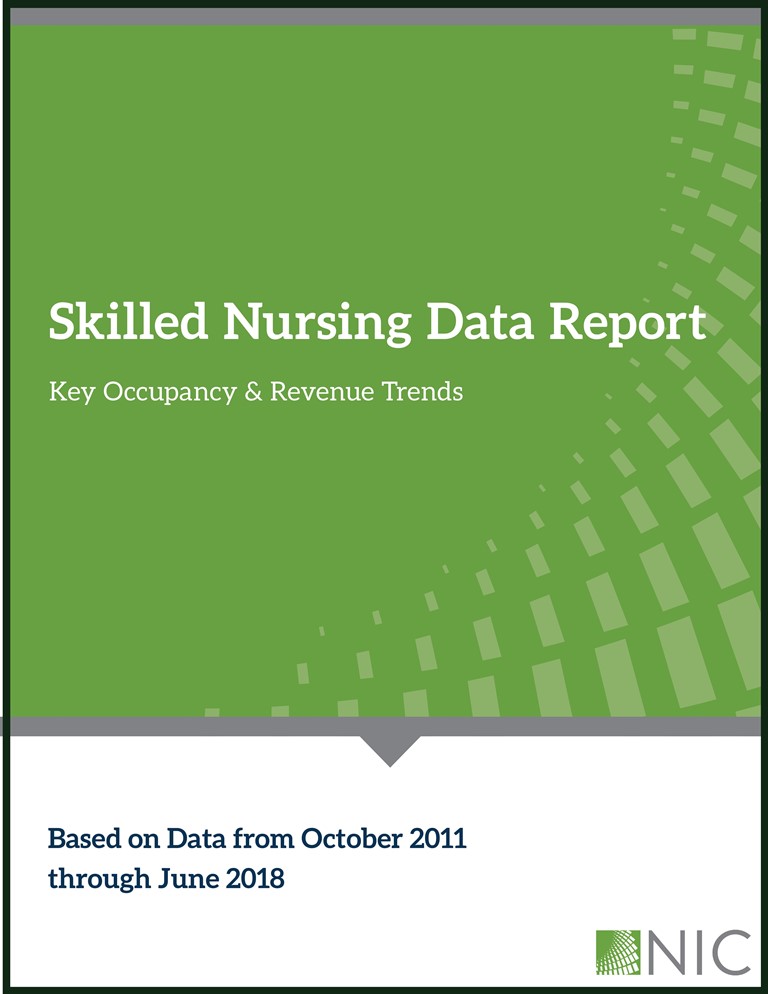Skilled Nursing Occupancy Dips to 81.7 Percent, a new Record Low
Occupancy decline attributed to major policy and business trends including competition and pressure from Medicare Advantage

Annapolis, Md. (September 12, 2018)—Occupancy rates at skilled nursing facilities across the United States continue to fall in urban and rural areas, hitting a new record low of 81.7 percent in the second quarter of 2018, according to the latest quarterly data from the National Investment Center for Seniors Housing & Care (NIC).
Experts say policy changes related to reimbursement and shortened lengths of stay and competition from assisted living and home health factor into the occupancy decline.
“We used to see skilled nursing occupancy spike during the winter months during a particularly strong flu season,” said Liz Liberman, NIC’s healthcare analyst. “Major health policy changes—some related to Affordable Care Act provisions that affect care delivery and payment—and business trends attributable to broader competition has resulted in continued occupancy declines.”
Despite significant growth in the number of seniors enrolled in Medicare Advantage (MA) health plans nationwide, NIC analysts note that Medicare Advantage mix has been flat for skilled nursing in the last year. Analysts also remarked on the considerable difference between urban (7.7%) and rural (3.0%) MA patient day mix reflecting wider availability of MA plans in urban areas. NIC analysts say tele-medicine and other innovations may impact this trend in the future, potentially bringing additional care options to rural areas experiencing a lack of available providers.
“We observed a slowdown in the growth of the share of MA patients at skilled nursing properties over the last year, which is interesting given that one-third of all seniors get Medicare coverage through the program,” said Bill Kauffman, senior principal at NIC. “The driver behind this slowdown in growth in MA in skilled nursing utilization may be due to the pressures on length of stay and reimbursement rates, which MA plans exert through their ability to negotiate contracts with healthcare providers. Without a doubt MA will have a dramatic impact on skilled nursing, and we’re already seeing that in urban areas, where these plans are plentiful.”
NIC’s Skilled Nursing Report is unique, because it includes occupancy data based on patient days over the course of a month. Other occupancy analyses examine “spot occupancy,” a less rigorous methodology that measures occupancy as the number of patients on a select point in time.
# # #
To receive a copy of the full report and to speak with an expert, please contact Rachel Griffith at 202-868-4824 or RGriffith@MessagePartnersPR.com.
About the National Investment Center for Senior Housing & Care
The National Investment Center for Seniors Housing & Care (NIC) is a 501(c)3 organization established in 1991 whose mission is to enable access and choice by providing data, analytics, and connections that bring together investors and providers. For more information, visit www.nic.org, and follow NIC on Twitter.
The full content of this article is only available to paid subscribers. If you are an active subscriber, please log in. To subscribe, please click here: SUBSCRIBE





